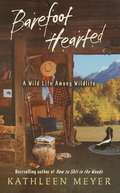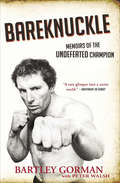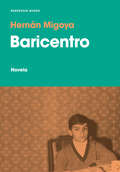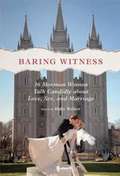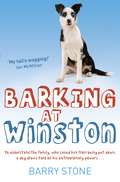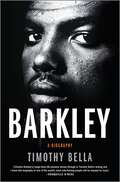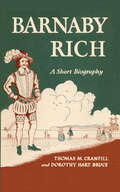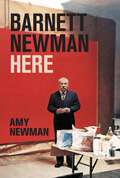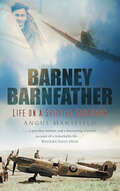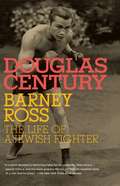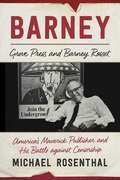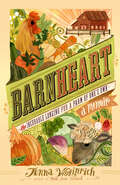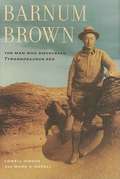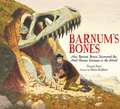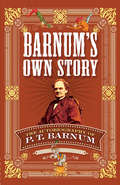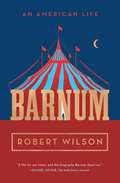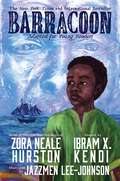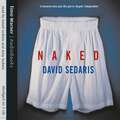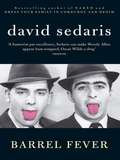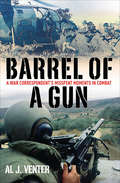- Table View
- List View
Barefoot-Hearted
by Kathleen Meyer"The Wyoming Centennial Wagon Train ended in Cody in a dismal, torn-down drive-in movie theater. Before setting up the corral, we were forced to clear away shards of glass, bent nails, broken lumber. My prairie skirt and petticoats hung ragged and clay-caked, and under a droopy Stetson my frizzled hair appeared at once greased and starched beyond human recognition. A cloud, a sort of vaporousness, redolent with fresh acrid sweat on top of powerful stale sweat, hung thickly about me. Laced, as it was, with a woman's sweet musky secretions, and all gone past ripe, oddly it was a pungency I savored. Such goaty piquance, though, was cause to be shunned in any town setting. The look of my world had changed. Gone were the high-dollar designer clothes and the zipping around fabled Marin County in a candy-apple-red 1966 Mustang convertible. It was true that I unfailingly sought the ironies in life and, with a kind of dual personality, shifted easily through incongruencies such as town strolls in high heels and backcountry hiking in bare feet; the bucket seats of a classic automobile and the broken-down bench of a beater truck. It was only during the years that Iíd worn white overalls, taped drywall, and come home every night much like Charles Schulz's Pig Pen, flaking a cloud of dried white mud bits onto the rug, that I'd felt moved to keep my fingernails painted red. Now I was to slip farther than ever planned toward one end of my seesaw and then, incredibly, by conscious design, inch out even farther." --from Barefoot-Hearted. Now, from the Rocky Mountain West, Meyer brings us Barefoot-Hearted: A Wild Life Among Wildlife, a coming-into-the-country story told with the frank, dry humor and sharp research of her first book. The country, in this case, is Montana's tall, reaching landscape with its ever underfoot wild critters; the on-tenterhooks territory of a new romantic relationship; and the pressure cooker that is our precarious global imbalance. Meyer finds herself in midlife standing out under yawning skies, surrounded by sagebrush and cactus, having fallen for the Irish charm of itinerant farrier Patrick McCarron. As partners, they travel across three mountain states with draft horses and a covered wagon and then set up housekeeping in a seventy-five-year-old dairy barn. In this primitive structure, the author rapidly discovers she's living with troops of mice, a nursery colony of seventy-five bats, sexually fired-up skunks, and more flies than in a pig shed. She tells of a freakish season that orphaned seventy-seven bear cubs, an unusual fly-fishing trip on a famed blue-ribbon trout stream, the visitations of moose, and the discovery of a den of wolves. Meyer's prose is original and inspired, playful yet provocative. She carries us vividly back to the settlers' old West while pondering modern-day dilemmas, those of fitting into this fast hurtling world, of determining amid the earth's rising extinctions of species, whose planet it is, and of managing to stay empowered residing with a man who "stands six feet six and beats steel on an anvil for a living." A personal chronicle of conscience and a love story of rare and quirky dimension, Barefoot-Hearted catapults readers into new realms of thought, deftly guided there by Meyer's sense of the ironic, the randy, and the humorous.
Bareknuckle: Memoirs of the Undefeated Champion
by Peter Walsh Bartley GormanAs bareknuckle fighting is poised to steal MMA&’s spotlight, its greatest modern-day champion tells his story of rising to the top in the brutal sport. Steeped in the tradition of his Irish Traveller ancestry, Bartley Gorman also embraced its dangerous subculture: bareknuckle fighting. Though it gave birth to boxing as we know it today, the sport has remained underground—and illegal in most developed countries. But that didn&’t stop Gorman from rising through the prize-fighting ranks of Great Britain and Ireland and staying undefeated for twenty years. Now, through Gorman&’s thrilling memoir, readers get a front row view of the punches exchanged in back parking lots and fair grounds, the gritty characters populating the fight circles, and the hazards facing a sought after champion. &“A rare glimpse into a secret world,&” Bareknuckle celebrates one man&’s mastery of fighting in its purest form and heralds the rebirth of one of the oldest combat sports in history (The Independent on Sunday). &“Every page shines. A tremendous book.&” —Traveller Magazine &“Well-written and interesting.&” —Boxing News
Barenaked Ladies: Public Stunts, Private Stories
by Paul MyersWant to know more about this Canadian quintet? It's all here, from the births of five Barenaked babies to the triumph of band member Kevin over leukemia.
Baricentro
by Hernán MigoyaUna preciosa novela sobre las derrotas de la juventud. El regreso a la literatura de Hernán Migoya. Cuando Hernán vuelve del Perú a casa, en la visita periódica a sus padres, algo ha cambiado. La enfermedad golpea con fuerza a la familia y quizá ya nada pueda ser como fue. Por ello se propone evocar sus años de formación en la periferia de Barcelona, en la ciudad dormitorio de Barberà del Vallès. Volver a la época que pasó a la sombra de un árbol genealógico huraño y al abrigo de un centro comercial protector. Unir entre sí, como una hilera de migas de pan, las experiencias que forjaron su carácter: la pasión por la cultura popular, el aprendizaje de los códigos del barrio, el desconocimiento sexual, la ética del buen hijo ante el sacrificio de una madre. Novela brutal y tierna, Baricentro es una travesía de regreso a los años cruciales. Sin embargo, nadie sale indemne de un viaje así, porque rendir cuentas a la infancia significa enjuiciar a la persona en que nos hemos convertido. Los lectores comentan...«Una especie de Ordesa de extrarradio barcelonés, que me perdonen él y Manuel Vilas pero es una forma rápida de decir que es un bello homenaje filial. [...] Tan lúcido y profético que a veces duele.»Lorenzo Silva, El Cultural de El Mundo ("¿Qué lee un escritor en cuarentena"?) «Tremebundo relato autobiográfico, pese a que el confinamiento le ha restado el reconocimiento mediático que merece, es uno de las novelas más sinceras y emotivas de la temporada en nuestro país.»Oriol Rodríguez, Mondosonoro «El cariño y nostalgia con los que Stephen King retrata a los niños estadounidenses de It en los años 50, lo traslada Migoya a los niños de la periferia barcelonesa de los 80. Un fresco precioso y honesto sobre los hijos de la clase obrera.»Llucia Ramis «Hernán Migoya es un hijo de perra de gran corazón y eso hace su obra imprescindible en un mundo lleno de presunta buena gente.»Dani Mateo «Rebosa verdad y provoca una empatía inmediata... Si entramos en Baricentro como chafarderos, salimos como cómplices. Y eso no es efecto de la confesión, sino de la literatura.»Nadal Suau, El Cultural «Un libro emocionante: desolla a delicadas tiras el corazón de un chaval del extrarradio de Barcelona, y hace sangrar el tuyo de risa y llanto y amor a la amistad, de lo bien escrito que está.»Víctor-M. Amela, La Vanguardia «Una novela de tintes autobiográficos en la que Migoya devuelve la dignidad a la palabra "nostalgia".»Guillermo Alonso, Icon, El País «Migoya cuenta su historia y es imposible no reír, llorar y emocionarse con ella porque también es la nuestra.»Oriol Rodríguez, Rockdelux «Un ajuste que termina en un emotivo abrazo. Y aunque Migoya es enemigo del patriotismo, la novela es un vivo homenaje a su verdadera patria, la patria chica de su corazón.»J. A. Masoliver Ródenas, La Vanguardia - Culturas «Un libro ordenado como una novela, narrado como unas memorias, leído como una teleserie en blanco y negro... Migoya actúa como un crucigramista que, en vertical y en horizontal, nos invita a rellenar nuestra identidad. Pasen y lean. Baricentro es una novela para quienes aún no se han dejado entumecer por el Valium del primer mundo.»Guzmán Urrero, Cualia «Una ternura tan límpida como emotiva se respira intensamente desde la primera a la última hoja del libro. Su historia familiar puede parecer la de muchos, pero tal como la explica Migoya es única.»Xavier Rosell, El Dia de Sabadell «Baricentro son más de doscientas cincuenta páginas que se leen del tirón y un epílogo ante el que resulta imposible no emocionarse hasta la lágrima. Más que desnudarse ante nuestros ojos, Migoya lista una a una
Baring Witness: 36 Mormon Women Talk Candidly about Love, Sex, and Marriage
by Holly WelkerIn Baring Witness , Welker and thirty-six Mormon women write about devotion and love and luck, about the wonder of discovery, and about the journeys, both thorny and magical, to humor, grace, and contentment. They speak to a diversity of life experiences: what happens when one partner rejects Church teachings; marrying outside one's faith; the pain of divorce and widowhood; the horrors of spousal abuse; the hard journey from visions of an idealized marriage to the everyday truth; sexuality within Mormon marriage; how the pressure to find a husband shapes young women's actions and sense of self; and the ways Mormon belief and culture can influence second marriages and same-sex unions. The result is an unflinching look at the earthly realities of an institution central to Mormon life.
Bark (The\mit Press Ser.)
by Georges Didi-HubermanA noted French thinker's poignant reflections, in words and photographs, on his visit to Auschwitz-Birkenau.On a visit to Auschwitz-Birkenau, Georges Didi-Huberman tears three pieces of bark from birch trees on the edge of the site. Looking at these pieces after his return home, he sees them as letters, a flood, a path, time, memory, flesh. The bark serves as a springboard to Didi-Huberman's meditations on his visit, recorded in this spare, poetic, and powerful book. Bark is a personal account, drawing not on the theoretical apparatus of scholarship but on Didi-Huberman's own history, memory, and knowledge. The text proceeds as a series of reflections, accompanied by Didi-Huberman's photographs of the visit. The photographs are not meant to be art—Didi-Huberman confesses that he “photographed practically everything without looking”—but approach it nevertheless. Didi-Huberman tells us that his grandparents died at Auschwitz, but his account is more universal than biographical. As he walks from place to place, he observes that in German birches are birken; Birkenau designates the meadow where the birches grow. Didi-Huberman sees and photographs the “reconstructed” execution wall; the floors of the crematorium, forgotten witnesses to killing; and the birch trees, lovely but also resembling prison bars. Taking his own photographs, he thinks of the famous photographs taken in 1944 by a member of the Sonderkommando, the only photographic documentation of the camp before the Germans destroyed it, hoping to hide the evidence of their crimes. Didi-Huberman notices a “bizarre proliferation of white flowers on the exact spot of the cremation pits.” The dead are not departed.
Barking at Winston
by Barry StoneWhen Bruce, an abandoned collie-cross puppy, is adopted by a lively family, he encounters more affection than ever before in his short life.With humour and a unique charm, he describes his life with his loving but troubled owners, and offers a sometimes hilarious insight into the world from a dog's point of view. But when the family is threatened, Bruce lends a paw, and uses his canine second sight to guide the family through some difficult times. Already a sleeper success, Barking At Winston is an authentic and endearing tale of one family and their canine friend.
Barking at Winston
by Barry StoneWhen Bruce, an abandoned collie-cross puppy, is adopted by a lively family, he encounters more affection than ever before in his short life.With humour and a unique charm, he describes his life with his loving but troubled owners, and offers a sometimes hilarious insight into the world from a dog's point of view. But when the family is threatened, Bruce lends a paw, and uses his canine second sight to guide the family through some difficult times. Already a sleeper success, Barking At Winston is an authentic and endearing tale of one family and their canine friend.
Barking to the Choir: The Power of Radical Kinship
by Gregory BoyleIn a moving example of unconditional love in difficult times, Gregory Boyle, the Jesuit priest and New York Times bestselling author of Tattoos on the Heart, shares what working with gang members in Los Angeles has taught him about faith, compassion, and the enduring power of kinship.In his first book, Tattoos on the Heart: The Power of Boundless Compassion, Gregory Boyle introduced us to Homeboy Industries, the largest gang-intervention program in the world. Critics hailed that book as an &“astounding literary and spiritual feat&” (Publishers Weekly) that is &“destined to become a classic of both urban reportage and contemporary spirituality&” (Los Angeles Times). Now, after the successful expansion of Homeboy Industries, Boyle returns with Barking to the Choir to reveal how compassion is transforming the lives of gang members. In a nation deeply divided and plagued by poverty and violence, Barking to the Choir offers a snapshot into the challenges and joys of life on the margins. Sergio, arrested at age nine, in a gang by age twelve, and serving time shortly thereafter, now works with the substance-abuse team at Homeboy to help others find sobriety. Jamal, abandoned by his family when he tried to attend school at age seven, gradually finds forgiveness for his schizophrenic mother. New father Cuco, who never knew his own dad, thinks of a daily adventure on which to take his four-year-old son. These former gang members uplift the soul and reveal how bright life can be when filled with unconditional love and kindness. This book is guaranteed to shake up our ideas about God and about people with a glimpse at a world defined by more compassion and fewer barriers. Gently and humorously, Barking to the Choir invites us to find kinship with one another and re-convinces us all of our own goodness.
Barkley: A Biography
by Timothy BellaThe definitive biography of Charles Barkley, exploring his early childhood, his storied NBA career, and his enduring legacy as a provocative voice in American pop culture He&’s one of the most interesting American athletes in the past fifty years. Passionate, candid, iconoclastic, and gifted both on and off the court, Charles Barkley has made a lasting impact on not only the world of basketball but pop culture at large. Yet few people know the real Charles. Raised by his mother and grandmother in Leeds, Alabama, he struggled in his early years to fit in until he found a sense of community and purpose in basketball. In the NBA he went toe-to-toe with the biggest legends in the game, from Magic to Michael to Hakeem to Shaq. But in the years since, he has become a bold agitator for social change, unafraid to grapple, often brashly, with even the thorniest of cultural issues facing our nation today. Informed by over 370 original interviews and painstaking research, Timothy Bella&’s Barkley is the most comprehensive biography to date of one of the most talked-about icons in the world of sports.
Barnaby Rich: A Short Biography
by Thomas Mabry Cranfill Dorothy Hart BruceSoldier, sea captain, freebooter, courtier, writer, reformer, and informer, Barnaby Rich was a man of his time. In the service of Queen Elizabeth, Rich took part in numerous campaigns fraught with hardship and disaster in France, the Low Countries, and Ireland. After twenty years of soldiering, he wrote Riche His Farewell to Militarie Profession, which attracted the attention of the Queen herself, as well as William Shakespeare and many of the lesser among his contemporaries. "I have preferred to be rich rather than to be called so," punned the Captain ruefully on his title pages, for he was usually in want and as often in trouble. The source of both misfortunes was his disdain for dodging a fight, and much that is known of his life comes from unpublished records of legal actions in which he was involved. Rich directed his satire primarily against the sinecures of the Anglican clergy in Ireland and against the papacy. "Sworne man" of both Elizabeth and James, he protested near the end of his life that his assaults with pike and pen were but the promptings of a "true harted subjecte." Born in an age bright with stars, Rich must be considered a "minor" Elizabethan. Therein lies the novelty of this study: it treats the not-so-great, using unpublished court records to enrich our knowledge of Great Britain's grandest era. But the story of the man is not lost in the background of the period. With freshness and charm the present volume disinters Barnaby Rich from the footnote crediting him as Shakespeare's source for the plot of Twelfth Night and fleshes him forth a live Elizabethan.
Barnaby Rich: A Short Biography
by Thomas Mabry Cranfill Dorothy Hart BruceSoldier, sea captain, freebooter, courtier, writer, reformer, and informer, Barnaby Rich was a man of his time. In the service of Queen Elizabeth, Rich took part in numerous campaigns fraught with hardship and disaster in France, the Low Countries, and Ireland. After twenty years of soldiering, he wrote Riche His Farewell to Militarie Profession, which attracted the attention of the Queen herself, as well as William Shakespeare and many of the lesser among his contemporaries. "I have preferred to be rich rather than to be called so," punned the Captain ruefully on his title pages, for he was usually in want and as often in trouble. The source of both misfortunes was his disdain for dodging a fight, and much that is known of his life comes from unpublished records of legal actions in which he was involved. Rich directed his satire primarily against the sinecures of the Anglican clergy in Ireland and against the papacy. "Sworne man" of both Elizabeth and James, he protested near the end of his life that his assaults with pike and pen were but the promptings of a "true harted subjecte." Born in an age bright with stars, Rich must be considered a "minor" Elizabethan. Therein lies the novelty of this study: it treats the not-so-great, using unpublished court records to enrich our knowledge of Great Britain's grandest era. But the story of the man is not lost in the background of the period. With freshness and charm the present volume disinters Barnaby Rich from the footnote crediting him as Shakespeare's source for the plot of Twelfth Night and fleshes him forth a live Elizabethan.
Barnett Newman: Here
by Amy NewmanThe definitive biography of a transformational American artist and the city that shaped himBarnett Newman (1905–1970), a founding member of the abstract expressionist movement, was a contemporary of such figures as Jackson Pollock, Willem de Kooning, Mark Rothko, and Clyfford Still. He left behind only 118 finished paintings, six sculptures, and 83 acknowledged drawings, yet is often regarded as the greatest painter to have emerged after the Second World War. Barnett Newman is the definitive biography of a charismatic New Yorker who defied the rules and created an art of the sublime.This landmark book features original research conducted over decades, using scores of interviews, oral histories, and previously unseen correspondence to paint a richly textured portrait of a creative sage who became an exemplar of the artist-citizen. Born in New York to Polish Jewish immigrant parents, he grandly aspired to involve himself in every detail of the city&’s life. He was a crusader for the civil service, ran against La Guardia for mayor, worked as a teacher, wrote poetry, criticism, and manifestos, produced political plays, and promoted other artists—all before painting a mature work of his own in his early forties. Newman began with none of the qualities once considered indispensable for a master artist, such as training, apprenticeship, or natural facility. But he possessed a galvanizing intellect and a conviction that aesthetic expression is an ecstatic declaration of existence and an assertion of human dignity.Drawing on previously unpublished sources gleaned from full access to Newman&’s archives, Amy Newman presents a portrait of a maverick whose works are among the most enduring of the twentieth century and whose influence continues to this day.
Barney Barnfather: Life on a Spitfire Squadron
by Angus MansfieldRiversdale Robert 'Barney' Barnfather was an RAF fighter pilot who flew Spitfires in action almost continuously from November 1941 until the end of the war in Europe. Barney was often in the thick of the fighting and saw action in the offensive sweeps over France, in the desperate air battle for Malta, the fighting in North Africa, the invasions of Sicily and Italy, and finally on the fringes of the Third Reich over Austria in 1945. This type of experienced and brave pilot formed the backbone of Fighter Command and after many operational flying hours, clashes with enemy aircraft and even a mid-air collision, he survived it all relatively unscathed. Thanks to the fascinating personal log book that Barney kept of his experiences, the contributions from his former colleagues and extensive historical research, Angus Mansfield has produced a detailed and enthralling history of a Spitfire pilot's escapades thousands of feet above the battlefields of the Second World War.
Barney Ross: The Life of a Jewish Fighter (Jewish Encounters Series)
by Douglas CenturyBorn Dov-Ber Rasofsky to Eastern European immigrant parents, Barney Ross grew up in a tough Chicago neighborhood and witnessed his father's murder, his mother's nervous breakdown, and the dispatching of his three younger siblings to an orphanage, all before he turned fourteen. To make enough money to reunite the family, Ross became a petty thief, a gambler, a messenger boy for Al Capone, and, eventually, an amateur boxer. Turning professional at nineteen, he would capture the lightweight, junior welterweight, and welterweight titles over the course of a ten-year career.Ross began his career as the scrappy "Jew kid," ended it as an American sports icon, and went on to become a hero during World War II, earning a Silver Star for his heroic actions at Guadalcanal. While recovering from war wounds and malaria he became addicted to morphine, but with fierce effort he ultimately kicked his habit and then campaigned fervently against drug abuse. And the fighter who brought his father's religious books to training camp also retained powerful ties to the world from which he came. Ross worked for the creation of a Jewish state, running guns to Palestine and offering to lead a brigade of Jewish American war veterans. This first biography of one of the most colorful boxers of the twentieth century is a galvanizing account of an emblematic life: a revelation of both an extraordinary athlete and a remarkable man.From the Hardcover edition.
Barney: Grove Press and Barney Rosset: America’s Maverick Publisher and His Battle against Censorship
by Michael RosenthalAn incisive, compulsively readable biography of the man the Guardian called the most influential avant-garde publisher of the twentieth century.An impetuous outsider who delighted in confronting American hypocrisy and prudery, Barney Rosset liberated American culture from the constraints of Puritanism. As the head of Grove Press, he single-handedly broke down the laws against obscenity, changing forever the nature of writing and publishing in this country. He brought to the reading public the European avant-garde, among them Samuel Beckett and Harold Pinter, radical political and literary voices such as Malcolm X, Che Guevara, and Jack Kerouac, steamy Victorian erotica, and banned writers such as D. H. Lawrence, Henry Miller, and William Burroughs. His almost mystical belief in the sacrosanct nature of the First Amendment essentially demarcates the before and after of American publishing.Barney explores how Grove's landmark legal victories freed publishers to print what they wanted, and it traces Grove's central role in the countercultural ferment of the sixties and early seventies. Drawing on the Rosset papers at Columbia University and personal interviews with former Grove Press staff members, friends, and wives, it tells the fascinating story of this feisty, abrasive, visionary, and principled cultural revolutionary—a modern Huckleberry Finn according to Nobel Prize–winning novelist Kenzaburo Oe—who altered the reading habits of a nation.
Barnheart: The Incurable Longing for a Farm of One's Own
by Jenna WoginrichWith humor and poise, Jenna Woginrich describes her adventurous self-education in homesteading. Poignant offbeat observations on learning to farm by trial and error punctuate the story of her quest to find a permanent home for herself and her livestock: chickens, geese, sheep, ducks, rabbits, a goat, and a turkey. Alone and on a shoestring budget, Woginrich takes on cranky neighbors and small-town politics without ever losing her trademark humility or comedic style.
Barnum Brown: The Man Who Discovered Tyrannosaurus Rex
by Lowell Dingus Mark A. NorellOne of the most famous scientists in the world during the middle of the twentieth century, Brown--who lived fast, dressed to the nines, gambled, drank, smoked, and was known as a ladies' man--became as legendary as the dinosaurs he uncovered.
Barnum's Bones: How Barnum Brown Discovered The Most Famous Dinosaur In The World
by Boris Kulikov Tracey FernBarnum Brown's (1873-1963) parents named him after the circus icon P.T. Barnum, hoping that he would do something extraordinary--and he did! As a paleonotologist for the American Museum of Natural History, he discovered the first documented skeleton of the Tyrannosaurus Rex, as well as most of the other dinosaurs on display there today. An appealing and fun picture book biography, with zany and stunning illustrations by Boris Kulikov, BARNUM'S BONES captures the spirit of this remarkable man. Barnum's Bones is one The Washington Post's Best Kids Books of 2012.
Barnum's Own Story: The Autobiography of P. T. Barnum
by P. T. BarnumP. T. Barnum's career of showmanship and charlatanry was marked by a surprising undercurrent of honesty and forthrightness. His exuberant autobiography forms a happy combination of all those traits, revealing the whole story of his world-famous hoaxes and publicity stunts. Here is a pageant of nineteenth-century America's gullibility and thirst for marvels, as told by the master of revels himself.A born storyteller, Barnum recalls his association with Tom Thumb, his audience with Queen Victoria, and his trouble keeping Jenny Lind's angelic image intact during a trying tour. He tells of Jumbo, the most famous elephant in history, from the creature's heroic arrival in America to its tragic death in a railroad accident; of his attempts to transfer Shakespeare's house and Madame Tussaud's Waxworks from England to New York; and of his triumphant reentry into public life after financial failure and five disastrous fires had all but wiped him out. The true-life tale of a man of boundless imagination and indomitable energy, Barnum's autobiography embodies the spirit of America's most exciting boom years.
Barnum: An American Life
by Robert WilsonThe first major biography of P.T. Barnum in a generation, a vivid account of the forefather of American entertainment.P. T. Barnum was the greatest showman the world has ever seen: the cocreator of the Barnum & Bailey Circus and the man who made worldwide sensations of Jumbo the Elephant, General Tom Thumb, and the “Swedish Nightingale,” Jenny Lind. He was the champion of wonder, joy, trickery, and “humbug.” He was, as Barnum argues, one of the most important Americans of the nineteenth century. Nearly 125 years after his death, the name P. T. Barnum still inspires wonder. Robert Wilson’s vivid new biography captures the full genius, infamy, and allure of the ebullient showman. From birth to death, Phineas Taylor Barnum repeatedly reinvented himself. He learned as a young man how to wow crowds, and built a fortune that placed him among the first millionaires in the United States. He also suffered tragedy, bankruptcy, and fires that destroyed his life’s work, yet willed himself to rebuild and succeed again. As an entertainer, Barnum courted controversy time and again throughout his life—yet he was also a man of strong convictions, guided in his work not by a desire to deceive but an eagerness to thrill and bring joy to his audiences. He almost certainly never uttered the infamous line, “There's a sucker born every minute,” instead taking pride in giving crowds their money’s worth and more. Robert Wilson, editor of The American Scholar, tells a gripping story in Barnum, one that’s imbued with the same buoyant spirit as the man himself. Wilson adeptly makes the case for P. T. Barnum’s place among the icons of American history, as a figure who represented, and indeed created, a distinctly American sense of optimism, industriousness, humor, and relentless energy.
Barracoon: Adapted for Young Readers
by Zora Neale Hurston Ibram X. KendiIn the first middle grade offering from Zora Neale Hurston and Ibram X. Kendi, young readers are introduced to the remarkable and true-life story of Cudjo Lewis, one of the last survivors of the Atlantic human trade, in an adaptation of the internationally bestselling and critically acclaimed Barracoon. <p><p> This is the life story of Cudjo Lewis, as told by himself. <p><p> Of the millions of men, women, and children transported from Africa to America to be enslaved, eighty-six-year-old Cudjo Lewis was then the only person alive to tell the story of his capture and bondage—fifty years after the Atlantic human trade was outlawed in the United States. Cudjo shared his firsthand account with legendary folklorist, anthropologist, and writer Zora Neale Hurston. <p><p> Adapted with care and delivered with age-appropriate historical context by award-winning historian Ibram X. Kendi, Cudjo’s incredible story is now available for young readers and emerging scholars. With powerful illustrations by Jazzmen Lee-Johnson, this poignant work is an invaluable contribution to our shared history and culture. <p> <b>New York Times Bestseller</b>
Barrel Fever
by David SedarisIn David Sedaris's world, no one is safe and no cow is sacred. A manic cross between Mark Leyner, Fran Lebowitz and the National Enquirer, Sedaris's collection of stories and essays is a rollicking tour through the American Zeitgeist: a man who is loved too much flees the heavyweight champion of the world; a teenage suicide tried to incite a lynch mob at her funeral; and in his essays, David Sedaris considers the hazards of rewards of smoking, writing for Giantess magazine, and living with his scrappy brother Paul, aka 'The Rooster'.With a perfect eye and a voice infused with as much empathy as wit, Sedaris writes and reads stories and essays that target the soulful ridiculousness of our behaviour. Barrel Fever is like a blind date with modern life - and anything can happen.
Barrel Fever: Stories And Essays
by David SedarisIn David Sedaris's world, no one is safe and no cow is sacred. A manic cross between Mark Leyner, Fran Lebowitz and the National Enquirer, Sedaris's collection of stories and essays is a rollicking tour through the American Zeitgeist: a man who is loved too much flees the heavyweight champion of the world; a teenage suicide tried to incite a lynch mob at her funeral; and in his essays, David Sedaris considers the hazards of rewards of smoking, writing for Giantess magazine, and living with his scrappy brother Paul, aka 'The Rooster'.With a perfect eye and a voice infused with as much empathy as wit, Sedaris writes and reads stories and essays that target the soulful ridiculousness of our behaviour. Barrel Fever is like a blind date with modern life - and anything can happen.
Barrel of a Gun: A War Correspondent's Misspent Moments in Combat
by Al J. VenterA colorful, wide-ranging memoir of danger and adventure in wars around the world.Anybody who says that the pen is mightier than the sword hasn’t spent time in Somalia . . .So begins this memoir of a career spent examining warfare—on the ground and as the bullets are flying. While many are intrigued by these violent conflicts, Al Venter feels compelled to see them in person, preferably at the center of the action.Born in South Africa, Venter has found no shortage of horrific battles on his own continent, from Rhodesia to Biafra and Angola to Somalia. He has ridden with the legendary mercenary group Executive Outcomes; jumped into combat with South Africa’s crack Parachute Regiment, the Parabats; and traipsed through jungles with both guerrillas and national troops. During Sierra Leone’s civil war, he flew in the government’s lone Mi-24 helicopter gunship as it blasted apart rebel villages and convoys, complaining that the Soviet-made craft leaked when it rained.In the Mideast, he went into Lebanon with the Israeli army as it encountered resistance from multiple militant groups, including the newly formed Hezbollah. Curious about the other side of the hill, he joined up with General Aoun’s Christian militias while that conflict was at its height. Touching down in Croatia during the Balkan wars, and in Congo during their perpetual one, as well as the Uganda of Idi Amin, Venter never lost his lust for action, even as he sometimes had to put down his camera or notebook to pick up an AK-47.In his journeys, Venter associated with an array of similarly daring soldiers and journalists, from “Mad Mike” Hoare to Danny Pearl, as well as elite soldiers from around the world, many of whom, he sadly relates, never emerged from the war zones they entered. A renowned journalist and documentarian who has worked with the BBC, PBS, Jane’s, and other outlets, Al Venter here offers the reader his own personal experiences with combat.
